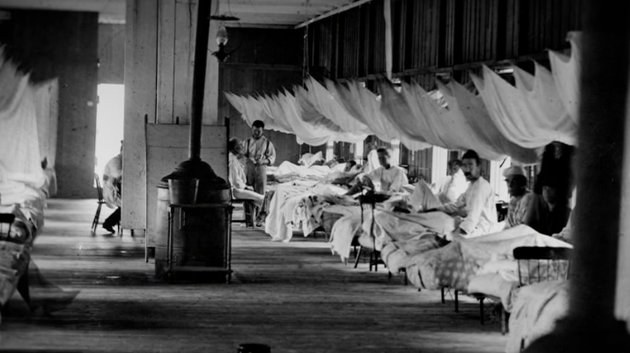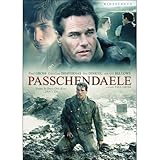 Wartorn 1861-2010 does a very good job of showing, through letters and articles written by past veterans of the Civil War and World War I, continuing with candid discussions about dysfunctional behavior on the part of World War II veterans, and the daily lives of Gulf War, Iraq and Afghanistan veterans, that exposure to traumatic sights and experiences during their military service had similar effects on returned servicemen and their families during very different historical eras in which very different technologies and cultural mores prevailed.
Wartorn 1861-2010 does a very good job of showing, through letters and articles written by past veterans of the Civil War and World War I, continuing with candid discussions about dysfunctional behavior on the part of World War II veterans, and the daily lives of Gulf War, Iraq and Afghanistan veterans, that exposure to traumatic sights and experiences during their military service had similar effects on returned servicemen and their families during very different historical eras in which very different technologies and cultural mores prevailed.
What is now known as PTSD was called by different names at different times: in World War I, “Shell Shock” in recognition of the paranoia caused by the sight and sound of what was then new weapons technology which brought impersonal deaths and maimings; in WWII “battle fatigue”; these various terms describe a psychic wounding which takes different forms, but in some instances has led to suicidal ideation, social isolation and feelings of anomie in those who are convinced that the people around them (in most cases the civilian population) do not understand them.
Societal attitudes (and often, those of the military) in the past, did nothing for them at best, and exacerbated the problem, at worst. “Battle fatigue” was “not something you wanted to have on your record’ one WWII veteran said in the context of a discussion of PTSD-induced behaviors on the part of several of his cohorts at a meeting of a veterans organization. Another chimed in that it was equivalent to being called a coward. Though the “side” of the military Establishment of the present day is shown in the documentary, with one high-ranking officer saying that the Army is taking steps to become more effective in reducing soldier suicides and “recognizing and treating” what he referred to as “PTS”, there is still a long way to go, and this particular officer’s attitude is apparently has not always been shared by many of his contemporaries in the service.
Another issue is that Traumatic Brain Injury (which is getting a lot more recognition, both public and official, in this particular American war) and PTSD share some common symptoms and may in some instances go hand-in-hand.
Some returned soldiers who _did_ commit suicide are discussed by their families. In one instance in the documentary, a soldier who sought professional help through the proper channels while on active duty was faced with a situation in which the military psychologist spoke to him for only a few minutes, dismissed the fact that on the paperwork, he’d checked off the box saying that he was thinking of suicide, and claimed he was “faking it” and sent him back to barracks…with his weapon. This turned out to be a situation in which not only did the military bureaucracy dismiss and fail to attempt to treat the problem, they effectively facilitated the suicide.
Another left the service, after which a downward spiral commenced characterized by self-loathing and culminating in suicide.
Then there are the returned soldiers who not only replay their wartime experiences in dreams and imaginings, but do things which may have been conducive to their survival in wartime situations, but which get them into trouble in the civilian world. One former soldier who killed a Middle Eastern cab driver got a lengthy prison sentence, his conduct was explained by the notion that due to his PTSD, he had a waking hallucination of a wartime situation and killed a harmless individual in civilian life, but the PTSD was not a legal defense in their state, and the California penal system provided no treatment for the PTSD.
This documentary, perhaps of necessity, limits itself to discussion of PTSD in the military developed under combat circumstances. One criticism of this documentary is that it presents a bleak picture and prognosis for people actually living with PTSD, and says very little about what resources are available to veterans and active duty servicemembers with PTSD. The official documentary website has a list of PTSD resources and websites for veterans and family members, as well as some more nuanced interviews with former soldiers suffering with PTSD and/or their family members in which they go into more detail about the interventions available, the bureaucratic hurdles to getting help, and what worked for them. It also does not go into very much detail about current methods and means of treatment, and whether they are actually helping returned veterans, though the DVD also contains footage of a separate panel discussion in which several individuals from government departments and various capacities in the services discuss the need for a more proactive approach by the services to identifying and treating PTSD in those on active duty, before they leave the military.
Alas, the panel discussion footage is uncaptioned.



